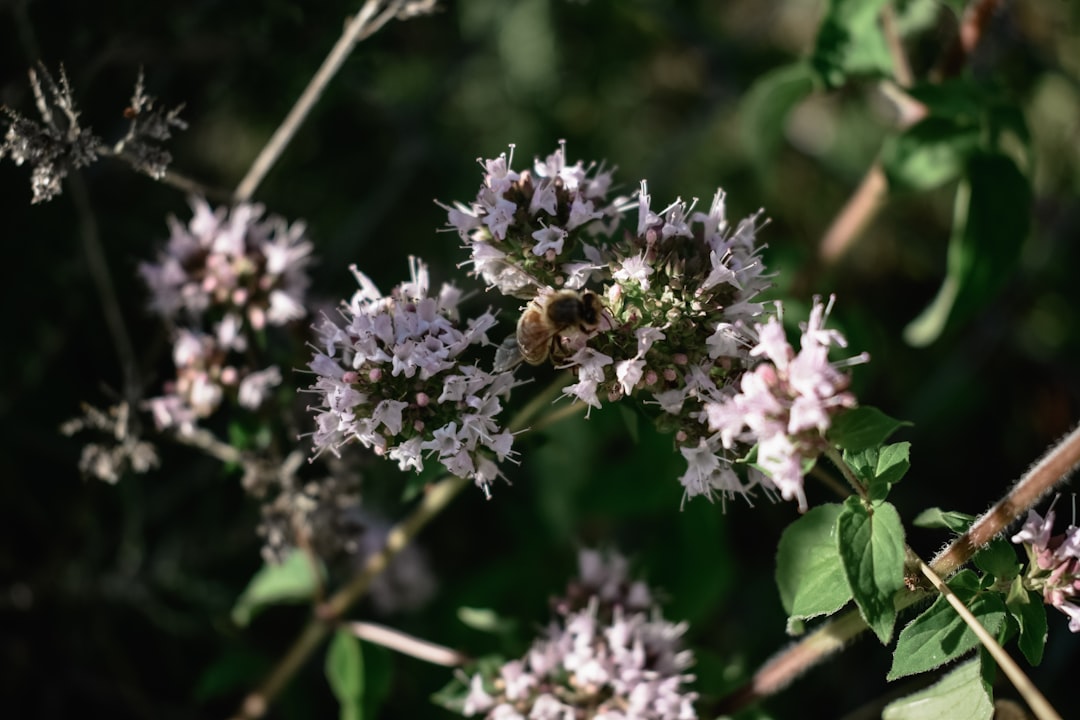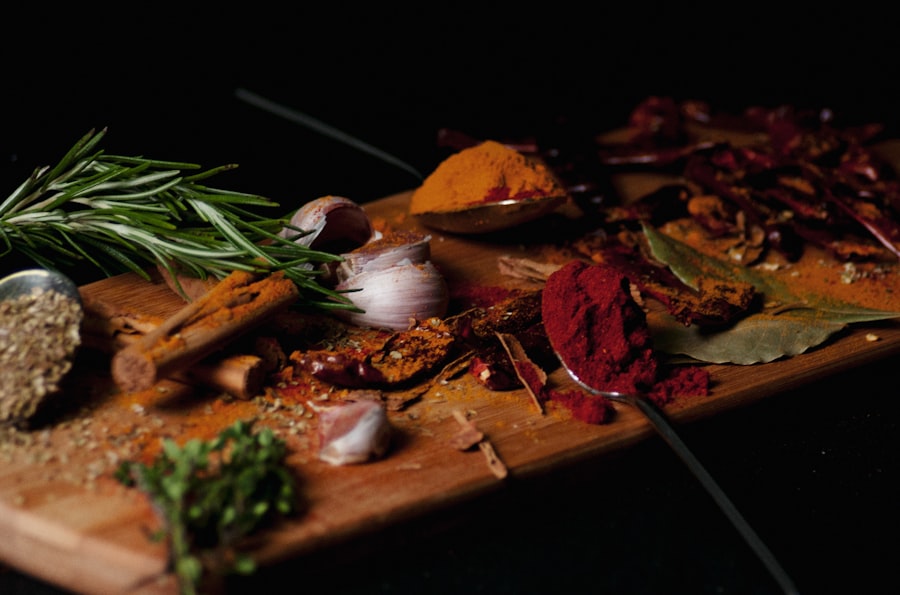Discovering Oregano: A Visual Guide to the Herb’s Appearance

Oregano is a versatile herb that is widely used in cooking and has a long history of medicinal use. It is a member of the mint family and is native to the Mediterranean region. Oregano has a strong, aromatic flavor that adds depth and complexity to a wide range of dishes. It can be used fresh or dried, and its leaves, flowers, and stems are all edible.
Key Takeaways
- Oregano is a versatile herb with a rich history and many culinary and medicinal uses.
- There are many types of oregano, each with its own unique flavor and aroma profile.
- Oregano can be easily grown at home with proper cultivation techniques.
- Oregano can be harvested and preserved for later use in cooking and medicinal applications.
- Oregano has numerous health benefits, including anti-inflammatory and antimicrobial properties.
Oregano’s Origins and History
Oregano has a rich history that dates back thousands of years. It is believed to have originated in the Mediterranean region, where it was used by the ancient Greeks and Romans for both culinary and medicinal purposes. The name “oregano” comes from the Greek words “oros,” meaning mountain, and “ganos,” meaning joy, reflecting the herb’s ability to thrive in rocky, mountainous terrain.
In ancient times, oregano was highly valued for its medicinal properties. It was used to treat a variety of ailments, including respiratory conditions, digestive issues, and infections. Oregano oil was also used topically to treat wounds and skin infections.
Types of Oregano: A Brief Overview
There are several different types of oregano, each with its own unique flavor and appearance. The most common type is Origanum vulgare, also known as Greek oregano or wild marjoram. This variety has a strong, slightly bitter flavor and is often used in Mediterranean cuisine.
Another popular variety is Origanum majorana, also known as sweet marjoram or knotted marjoram. This type of oregano has a milder flavor and is often used in Italian and French cooking.
Other varieties of oregano include Mexican oregano (Lippia graveolens), which has a citrusy flavor, and Cuban oregano (Plectranthus amboinicus), which has a strong, pungent flavor.
The Anatomy of Oregano: Leaves, Flowers, and Stems
| Part of Oregano | Description | Uses |
|---|---|---|
| Leaves | The leaves of oregano are oval-shaped and have a fuzzy texture. They are dark green in color and have a pungent aroma. | Used as a seasoning in cooking, especially in Italian and Mediterranean cuisine. Also used in herbal medicine for its antibacterial and anti-inflammatory properties. |
| Flowers | The flowers of oregano are small and white or pink in color. They grow in clusters at the top of the stems. | Used as a decorative element in salads and other dishes. Also used in herbal medicine for its antiseptic and antioxidant properties. |
| Stems | The stems of oregano are woody and have a square shape. They are green in color and can grow up to 2 feet tall. | Used as a seasoning in cooking, especially in Italian and Mediterranean cuisine. Also used in herbal medicine for its antifungal and antiviral properties. |
Oregano is a perennial herb that grows in small, bushy clumps. It has oval-shaped leaves that are dark green in color and have a slightly fuzzy texture. The leaves are the most commonly used part of the plant and are harvested for their aromatic flavor.
Oregano also produces small, white or pink flowers that bloom in clusters. These flowers are edible and can be used as a garnish or added to salads for a pop of color.
The stems of the oregano plant are woody and can be quite tough. They are not typically eaten, but they can be used to infuse flavor into soups, stews, and sauces.
Oregano’s Aroma and Flavor Profile
Oregano has a distinct aroma and flavor that sets it apart from other herbs. It has a warm, slightly peppery scent that is often described as earthy and aromatic. The flavor of oregano is bold and slightly bitter, with hints of citrus and pine.
The unique taste and smell of oregano make it a popular choice for adding depth and complexity to a wide range of dishes. It pairs well with tomatoes, garlic, onions, and other Mediterranean flavors. Oregano is commonly used in Italian cuisine, where it is a key ingredient in dishes such as pizza, pasta sauce, and roasted vegetables.
Cultivating Oregano: Tips for Growing Your Own

Oregano is relatively easy to grow and can be cultivated in both garden beds and containers. It prefers well-drained soil and full sun but can tolerate some shade. Oregano plants should be spaced about 12 inches apart to allow for proper air circulation.
To grow oregano from seeds, start by sowing them indoors about 6-8 weeks before the last frost date. Once the seedlings have sprouted, transplant them outdoors after all danger of frost has passed. Oregano can also be propagated from cuttings or by dividing an established plant.
To keep your oregano plants healthy, water them regularly but avoid overwatering, as this can lead to root rot. Oregano is a relatively low-maintenance herb and does not require much fertilizer. However, you can apply a balanced organic fertilizer once or twice during the growing season to promote healthy growth.
Harvesting and Preserving Oregano
Oregano can be harvested throughout the growing season, but the flavor is most potent just before the plant flowers. To harvest oregano, simply snip off the leaves and stems with a pair of clean scissors or pruning shears. Be sure to leave at least one-third of the plant intact to allow for regrowth.
Fresh oregano can be used immediately or stored in the refrigerator for up to a week. To preserve oregano for later use, you can dry it by hanging the stems upside down in a cool, dry place. Once the leaves are dry and brittle, remove them from the stems and store them in an airtight container.
Another option for preserving oregano is to freeze it. Simply chop the leaves and place them in an ice cube tray filled with water or olive oil. Once frozen, transfer the cubes to a freezer bag or container for long-term storage.
Culinary Uses for Oregano: Recipes and Pairings
Oregano is a staple herb in Mediterranean cuisine and is used in a wide variety of dishes. It pairs well with tomatoes, garlic, onions, and other herbs such as basil and thyme. Here are a few popular recipes that showcase the versatility of oregano:
1. Classic Margherita Pizza: Spread a thin layer of tomato sauce on a pizza crust and top with fresh mozzarella cheese. Sprinkle with oregano, salt, and pepper, and bake until the cheese is melted and bubbly. Garnish with fresh basil leaves before serving.
2. Greek Salad: Combine chopped cucumbers, tomatoes, red onions, Kalamata olives, and feta cheese in a bowl. Drizzle with olive oil and lemon juice, and sprinkle with oregano, salt, and pepper. Toss to combine and serve chilled.
3. Italian Meatballs: In a large bowl, mix together ground beef, breadcrumbs, grated Parmesan cheese, minced garlic, chopped parsley, dried oregano, salt, and pepper. Shape the mixture into meatballs and bake in the oven until cooked through. Serve with marinara sauce and spaghetti.
4. Lemon-Oregano Roasted Chicken: Rub a whole chicken with olive oil, lemon juice, minced garlic, dried oregano, salt, and pepper. Roast in the oven until the skin is crispy and the meat is cooked through. Serve with roasted potatoes and steamed vegetables.
Medicinal Properties of Oregano: Health Benefits and Uses
In addition to its culinary uses, oregano also has several health benefits. It is rich in antioxidants, which help protect the body against damage from free radicals. Oregano also has antimicrobial properties and can help fight off bacteria and viruses.
Oregano oil is often used as a natural remedy for respiratory conditions such as coughs, colds, and bronchitis. It can be taken orally or used topically to relieve congestion and soothe sore throats.
Oregano has also been shown to have anti-inflammatory properties and may help reduce inflammation in the body. This can be beneficial for conditions such as arthritis and inflammatory bowel disease.
The Many Benefits of Oregano for Your Home and Health
In conclusion, oregano is a versatile herb that can enhance the flavor of a wide range of dishes. It has a long history of culinary and medicinal use and is valued for its unique taste and aroma.
Whether you grow your own oregano or purchase it from the store, incorporating this herb into your diet can provide numerous health benefits. From boosting the immune system to reducing inflammation, oregano is a powerful herb that can support overall health and well-being.
So why not add a sprinkle of oregano to your next meal? Whether you’re making a homemade pizza, a fresh salad, or a comforting bowl of soup, oregano is sure to add a burst of flavor and a touch of Mediterranean flair.
If you’re curious about what oregano herb looks like, you might also be interested in learning more about different types of herbs and plants. Lawn World offers a comprehensive sitemap that can guide you through their extensive collection of articles on gardening and landscaping. From tips on maintaining a lush lawn to advice on growing various herbs and plants, their website is a valuable resource for all gardening enthusiasts. Check out their sitemap here to explore more informative articles related to your gardening interests.
FAQs
What is oregano herb?
Oregano herb is a perennial plant that belongs to the mint family. It is commonly used as a culinary herb and has medicinal properties.
What does oregano herb look like?
Oregano herb has small, oval-shaped leaves that are dark green in color. The leaves are about 1-2 inches long and have a slightly fuzzy texture. The plant can grow up to 2 feet tall and has small white or pink flowers.
Where is oregano herb commonly found?
Oregano herb is native to the Mediterranean region but is now widely cultivated in many parts of the world. It can be found in gardens, farms, and in the wild.
What are the culinary uses of oregano herb?
Oregano herb is commonly used in Mediterranean and Mexican cuisine. It is used to flavor dishes such as pizza, pasta sauces, soups, and salads. It can also be used to make herbal teas and infused oils.
What are the medicinal properties of oregano herb?
Oregano herb has antibacterial, antifungal, and antioxidant properties. It is commonly used to treat respiratory infections, digestive problems, and skin conditions. It is also believed to have anti-inflammatory properties.



